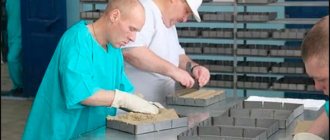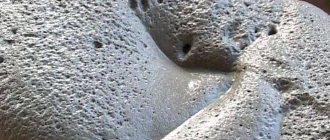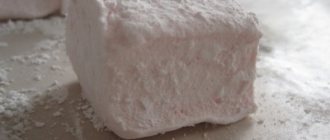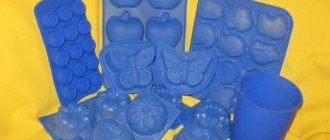The production of fruit chips is a relatively free segment of activity. Since the product is new, the demand for it has not been sufficiently studied, so few entrepreneurs want to work in this area of production. Its advantages include small investments to start, no need for special theoretical and practical skills, and no obvious competition. In this article we will look at how to open a business, what you need to pay attention to when starting out, and how to quickly achieve results.
Fruit chips
general information
Fast food that tastes good but has no harmful effects on health is the dream of a person who prefers a quick snack. Fruit chips do not harm your figure and health. They contain a minimal amount of calories and many healthy vitamins and minerals.
The main target audience of the product are people leading a healthy lifestyle, as well as girls. It is worth noting that other categories of people will also be happy to purchase products. At the same time, it is difficult to say who will buy more, men or women, people with average or high incomes.
1Industrial production of chips
Factories specializing in the production of chips usually select raw materials for production very carefully. Potatoes for these cases are chosen from special varieties that have a higher density. Also, much attention is paid to the amount of sugar in the structure of potatoes; the less, the better. Thanks to all these qualities, the resulting potatoes will be crispy, unbreakable, and have a pleasant golden color.
Making chips in production is a complex process that requires high labor and energy costs. Before reaching the chip lover's hands, potatoes go through a number of stages. The technology is strictly followed, otherwise nothing will work.
- First, the plant finds a potato producer who grows vegetables of the required variety and decent quality.
- After a supplier is found, he delivers the raw materials to the plant, where the tubers are carefully sorted, washed, dried and sent to warehouses where special temperature and climatic conditions are maintained, ensuring long-term storage of the potatoes.
- Upon request, the required batch of potatoes is obtained, inspected for all kinds of defects and storage damage, which are eliminated if possible.
- If you thought that chips are made by hand by a company of soldiers at every factory, then you are mistaken. Tubers are cleaned in special devices that resemble drums.
- The bottom of these drums is equipped with special knives with sharp blades that are capable of cutting the tuber into thin circles only 2 mm thick.
- The chips are deep fried. This is the only way to achieve the required color of potato slices and their unique taste. Naturally, factories also use deep fryers on a colossal scale. These are giant baths filled with vegetable oil, which is heated to a temperature of 180 degrees Celsius. Frying time is exactly 3 minutes.
- After the chips are fried, they are salted, seasoned, and flavored with additives with the flavor with which this batch of snacks is planned to be released.
- After all the above manipulations, the chips are packaged in branded bags in pre-weighed batches. Both weighing and packaging are an automated process.
Sometimes manufacturers don’t bother too much and produce chips that don’t even contain potatoes. This technology requires flour and starch for production. These ingredients are kneaded into dough, formed into molds and deep-fried. It turns out no less tasty than from potatoes. However, it is hardly possible to call the final product chips. These are delicious snacks that you can also crunch with pleasure.
Organizational nuances
To successfully start a business, you need to plan everything in advance. All your thoughts, plans and calculations should be reflected in a business plan. It is expected that the production process will be launched within six months from the start of organizational activities, which include registering a business, obtaining permits, searching for premises and carrying out repairs there, purchasing equipment and testing it, as well as searching for suppliers of quality products that will be used as raw materials .
The first sales are expected after half a month of work, since the first two weeks will be needed to attract customers by informing them about the possibility of purchasing eco-products.
Documents and permits
Before studying what features the production technology of meat chips, as well as their potato analogues, has, it is advisable to study in more detail the necessary documentation that will need to be completed to start production. To begin with, an entrepreneur will need to go through the registration procedure as an individual entrepreneur/LLC.
The second option seems to be more preferable, since when concluding agreements with various kinds of companies and suppliers, it will inspire much more confidence in them. To do this, you will need to collect a package of documents established by law. Among them:
- Russian passport, TIN;
- application in accordance with form P21001;
- the charter of the future organization, as well as its legal address;
- decision to create an organization.
When submitting an application, you will need to indicate your desire to switch to a simplified taxation scheme by indicating an identification code in accordance with the OKVED system. In such a case, the optimal solution would be 15.31, which corresponds to potato processing/canning.
It is also necessary to pay a state duty in the amount of 4 thousand rubles. After 5 working days, the organization will be fully registered, after which the entrepreneur will be able to receive the appropriate certificate, as well as an extract from the Unified State Register of Legal Entities.
However, having such documents is not enough to run a chips production business. To do this, you will need to obtain a number of other documents, including:
- health records of persons who will be employed in production;
- permits received from the Sanitary and Epidemiological Station, as well as the fire service;
- quality mark from Rospotrebnadzor;
- documentary evidence of the quality of raw materials used for production, which
- available from suppliers.
Due to various issues associated with collecting documentation, it may take several months to obtain all necessary permits. To speed up the procedure, entrepreneurs often hire intermediary companies, which leads to additional costs, but allows production to begin faster.
To make a profit you need to properly organize production
Technology
The production of chips is carried out using simple technology. It consists of the step-by-step implementation of the following activities:
- preparing fruits for the process - washing them, drying them, removing peels and seeds if necessary;
- cutting prepared fruits into thin slices;
- drying in equipment whose functionality maintains a given air temperature;
- removal of products from equipment, their packaging and packing.
For each type and variety of fruit, it is necessary to select a processing temperature. The optimal parameter values can only be selected experimentally. It is permissible to add various components to some types of raw materials to give the finished product a unique taste. Depending on the type of fruit and its combination with other products, you can use additives such as powdered sugar, vanilla sugar, salt, pepper, marjoram, basil and other types of seasonings.
Banana chips
It is better to pack products in paper bags. The packaging material will prevent the formation of mold and extend the shelf life, which is not typical for cellophane and plastic bags.
Alternative snack production: meat chips
We are all very familiar with a similar product made from potatoes. But today, meat chips are only gaining popularity, which makes their production a very promising business idea. What are these snacks?
These chips are made from natural meat ingredients and have a long shelf life. These snacks are a healthy product. Due to the fact that they are made from natural meat, these chips are rich in valuable nutritional components in the form of protein. In addition, they contain only a small amount of fat. But substances harmful to our body such as trans fats, flavor enhancers, flavors and other chemical additives are completely absent.
As for equipment for the production of meat chips, it is not as widely represented on the market as for its potato counterpart. However, if you want to purchase a technological line, it will not be difficult. You just need to consult with a competent technologist.
The minimum amount that will need to be spent on the purchase of equipment will be 500 thousand rubles. In general, the start-up capital required to organize the production of meat chips is estimated at 2.5-3 million rubles. The profitability and payback indicators of this business are at the level of the potato analogue.
But as for organizing the sales process, even in large cities an entrepreneur will have much fewer problems than a manufacturer of classic chips. After all, this product is still a new product, and in retail outlets it is presented in a fairly narrow assortment.
How banana chips are made in production
Banana chips are made from ripe bananas. They can come in a variety of flavors: sweet, salty, spiced, cinnamon, vanilla, etc. Bananas can be cut into slices, cubes, slices, halves or quarters. Banana slices can be dried in an oven or fried in oil, followed by immersion in a prepared solution with additives. To prevent the banana from darkening, the cut slices are dipped into a solution with citric or tartaric acid before processing. Fry the slices in palm oil immediately before use.
The dried blanks can be used to make banana flour, which can be packaged and sold as a separate product.
It will be purchased by muesli lovers. It can also be used for baking, desserts and confectionery. Flour goes well with dairy products.
Production technology
It is simple and consists of several successive steps:
- Preparation of raw materials. The potatoes are washed with water, then peeled and cut into slices no more than 2 millimeters thick.
- Blanching. Involves processing potato slices with steam and hot water.
- Pre-drying. At this stage, excess moisture is removed from the workpieces.
- Frying and adding flavors. Potatoes are fried in sunflower oil at a temperature of about 150 °C. At the same stage, flavors, spices and other additives are added in accordance with the recipe.
- Packing of finished products and sending to the warehouse.
The technological process for making snacks from pellets is even simpler: the semi-finished product is quickly fried in oil, after which spices and flavorings are added.
Selecting a room
The production process for making fruit chips falls into the food category. For this reason, when choosing premises, the legal regulations applicable to the catering industry should be observed. You won't be able to run a business in your own kitchen. Therefore, you will have to rent a room, the condition and parameters of which must comply with SES and fire safety standards.
For the convenience of the entrepreneur, you should consider options for premises with an area of 20 square meters or more. All engineering communications must be connected to it, since, otherwise, you will have to carry them out yourself, which will require additional investment in the business. It is better to find options for premises that were previously used for catering establishments. Renting such real estate will cost 15,000 rubles. Additionally, you must expect to pay utility bills in the amount of up to 5,000 rubles.
To obtain permission to start activities, repair work must be carried out to ensure that the walls and floors are cleaned. The best solution for this would be to equip them with tiles. You will also need to equip the room with ventilation and divide it into several compartments, one of which is intended to accommodate personnel and the location of toilets and bathrooms.
It is necessary to conclude agreements for the removal of industrial waste and for the purchase of raw materials. All equipment must be certified. The workshop must be equipped with a fire alarm. Fire panels with fire extinguishing equipment, including fire extinguishers, must be placed on the site.
Production room
The premises for the location of the chips production line must meet sanitary requirements.
If production volumes are planned within 200 kilograms per shift, a workshop with a total area of at least 100 m2 will be required. An office, a warehouse for raw materials and finished products should be located nearby, or better yet in the same building. The premises must have all utilities - water supply, electricity, sewerage, exhaust hood, air conditioning system. The workshop must meet fire safety standards and SES, for which it is necessary to obtain the appropriate certificate.
Equipment for the production of chips
Organization of the production process is impossible without specific equipment. It is intended to facilitate the work of the entrepreneur, to speed up the production process and to provide certain operations, the implementation of which is impossible without special equipment. At the business planning stage, you should think about including in the project budget the amount needed to purchase equipment.
Drying equipment
A cutting device will cost 20,000 rubles, and for an electric dryer you will have to pay 40,000 rubles. You should budget 15,000 rubles for packaging equipment. You will also need to buy kitchen equipment, such as boards, knives and buckets, for which you need to budget 5,000 rubles. After carrying out simple calculations, it turns out that up to 80,000 rubles will be needed to purchase equipment to support the production process.
What taxation system should you choose for the production of meat chips?
For an enterprise with a small production scale, you can write an application to the tax office about choosing UTII (advantages: minimal financial burden on the company’s activities and no problems with preparing reports), but a single tax is established by local authorities and is not applied in all regions of the country.
An alternative option is the simplified tax system. This tax regime allows you to pay a completely adequate amount of taxes, and has no hidden pitfalls. For large manufacturing companies, it is rational to work on a general basis in order to have the right to conduct transactions with VAT.
How to choose raw materials
When choosing suppliers of raw materials, you should focus on those sellers who are located nearby. This approach will save on transportation costs. Fruits can be purchased at a vegetable warehouse, at the nearest market or in a store that supports the option of wholesale purchases.
The main requirement for a product is its appearance. It must be fresh, without rot or damage. For some types of fruit, the facts of overripeness, underripeness or bruising are unimportant, since the finished product will be cut and dried. You can save on this by purchasing a product that can no longer be sold to the consumer due to the fact that it is ugly. However, the beauty factor is not important for all fruits. For some it is crucial. For example, for oranges it is important that the crust is intact, since in the finished product it is the framing element of the decor of the chips.
To reduce the cost of starting a business, you should plan it during the harvest season, which falls in the summer-autumn period. At this time, you can buy inexpensive apricots, apples, pears and other fruits.
Who invented chips? - History of creation
According to the official history, potato chips were invented in 1853 by chef George Croom at a restaurant called Moon's Lake House in Saratoga Spring, New York.
Chips inventor George Croome
The popularity of potato chips quickly spread throughout the country. Chips were usually prepared in someone's kitchen and then delivered directly to stores and restaurants or sold on the street. The shelf life allowed them to be transported over long distances. Two inventions paved the way for mass production. In 1925, an automatic potato peeling machine was invented. A year later, several employees of the Laura Scudder potato chip company learned how to package chips in special wax paper. Potato chips received an additional boost when the U.S. government declared them a staple food in 1942, allowing factories to remain open during World War II.
In many cases, potato chips were the only ready-to-eat vegetables available. After the war, it was common to use chips with regular meals and as an ingredient in salads and soups. Television also contributed to the popularity of chips, as Americans loved to spend time with them on the couch in front of the TV.
Interesting: How and from what is sugar made? Description, photo and video
Today, potato chips are the most popular snack food in the United States. According to the Snack Food Association, potato chips make up 40% of snack consumption, surpassing pretzels and popcorn, despite the fact that hardly anyone considers potato chips nutritious. However, the main challenge facing manufacturers in the 1990s was to develop tasty, low-fat chips.
Financial indicators
The cost of production includes the costs of purchasing raw materials, as well as renting premises, paying utility bills, taxes, and staff salaries.
For a kilogram of fruit chips the figure is 200 rubles. To make them you will need 7 kilograms of fresh fruit. You can sell chips for 150 rubles per serving weighing 200 grams in a paper bag. From the sale of a kilogram of chips, the cash register will receive 750 rubles, part of which falls into the profit category. To achieve break-even, you need to sell 36 kilograms of chips. It is realistic to produce and sell 100 kilograms of product per day, for which you can get up to 35,000 rubles of net profit.
Unloading finished products
According to the calculations, we can conclude that in order to cover monthly expenses, it is necessary to place more than 175 orders, provided that packaging the product costs more than 200 rubles. When selling to wholesale customers, it is enough to make two sales. The payback period for investments in the project is one year. To reduce the value of the indicator, it is necessary to organize several points of sale. Depending on the planned scale of the business, they can be installed in different cities and even regions.
To eat or not to eat: that is the question
What they don’t say about everyone’s favorite chips: they are harmful, carcinogenic, cholesterol with trans fats in their pure form. However, their popularity does not suffer. But the question of whether they can be eaten without harm to health remains.
If you turn to the Roskontrol website, the results will be amazing: out of the thirteen packages of chips tested, not a single one was blacklisted; moreover, all ratings are in the green zone! That is, no harmful contents were found in the packages. An enviable level of quality for a product.
For comparison: other snacks, which at first glance should be more natural and healthy, cannot boast of such results. Some samples of seeds or crackers fell into the yellow zone, that is, there were questions about their quality.
The conclusion suggests itself: you can eat chips! Like any product, if consumed excessively, they can cause harm, first of all, to the figure.
Financial calculations
When planning to determine the amount of possible costs and the prospects of this kind of enterprise, you should analyze the main items of expenses that will need to be paid to organize production. First of all, this is renting/renovating the premises, which will require about 100 thousand rubles.
In addition, you should remember:
- equipment price - 1.5 million rubles;
- cost of raw materials - 500 thousand rubles;
- staff salary - 457 thousand rubles;
- advertising - 90,000 rubles;
- payment for utilities - 120 thousand rubles;
- tax fees - 450 thousand rubles;
- additional costs - 25,000 rubles.
In total, production will require the entrepreneur to spend about 3.2 million rubles, which is partly compensated by the high demand for products of this type.











